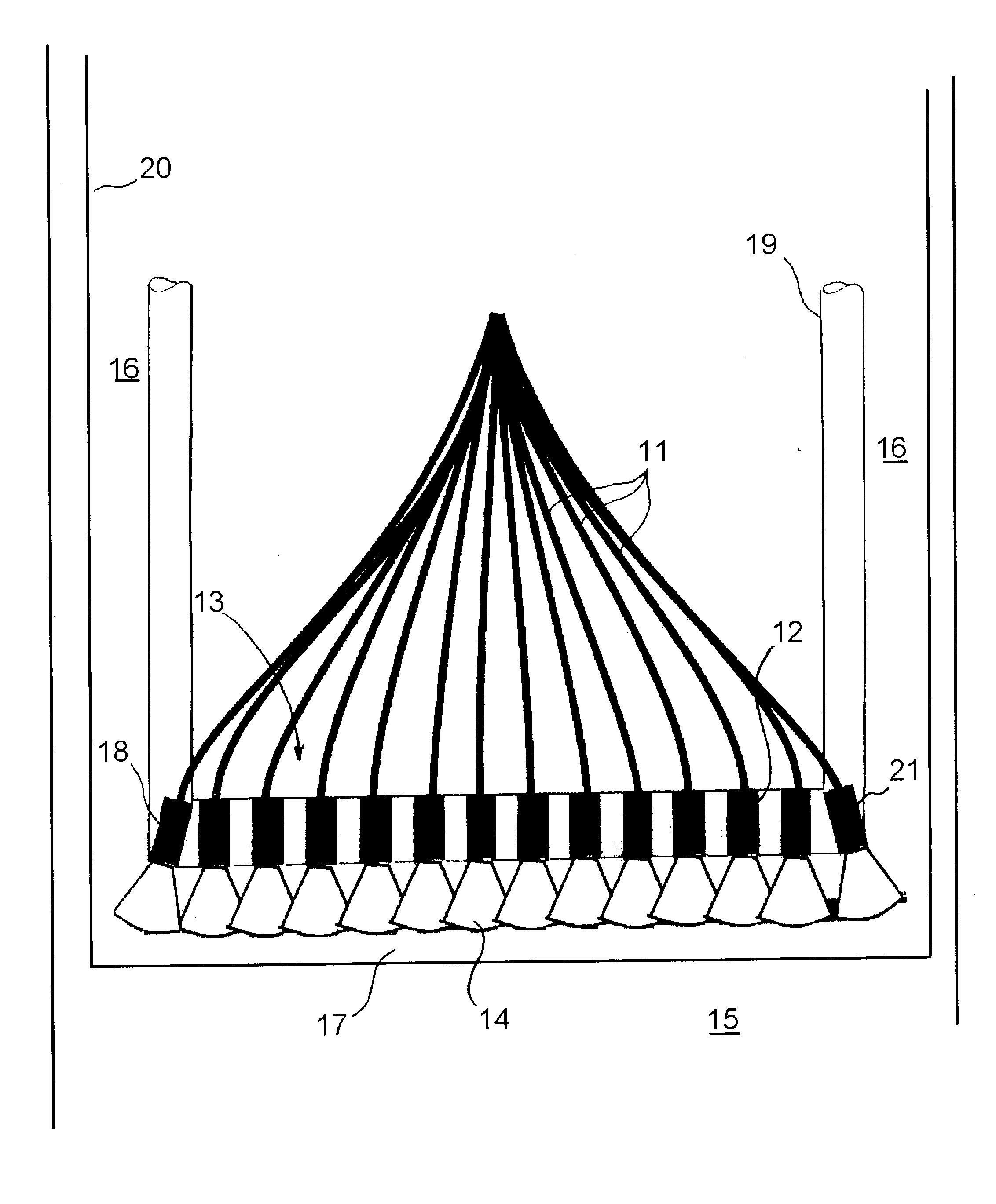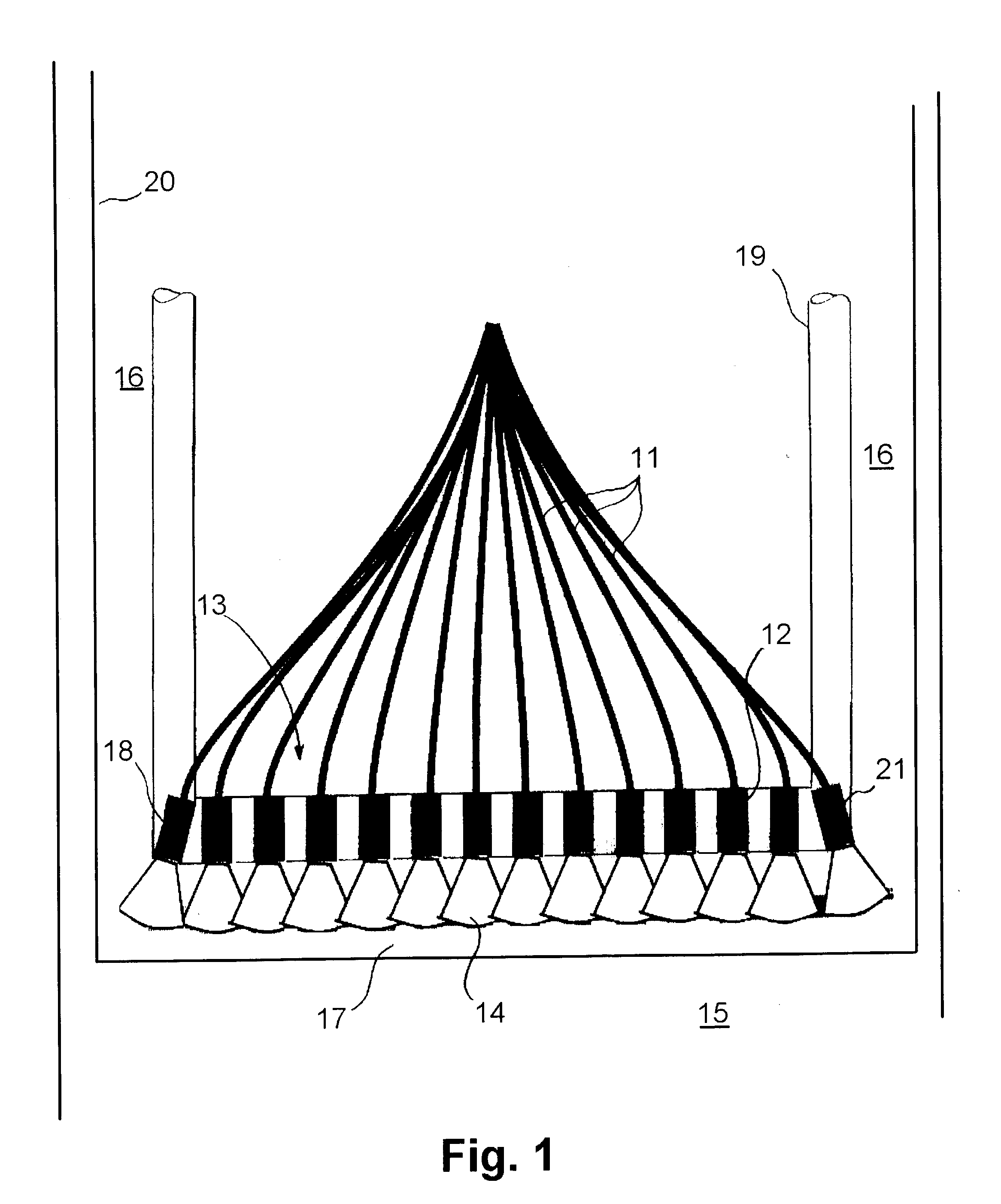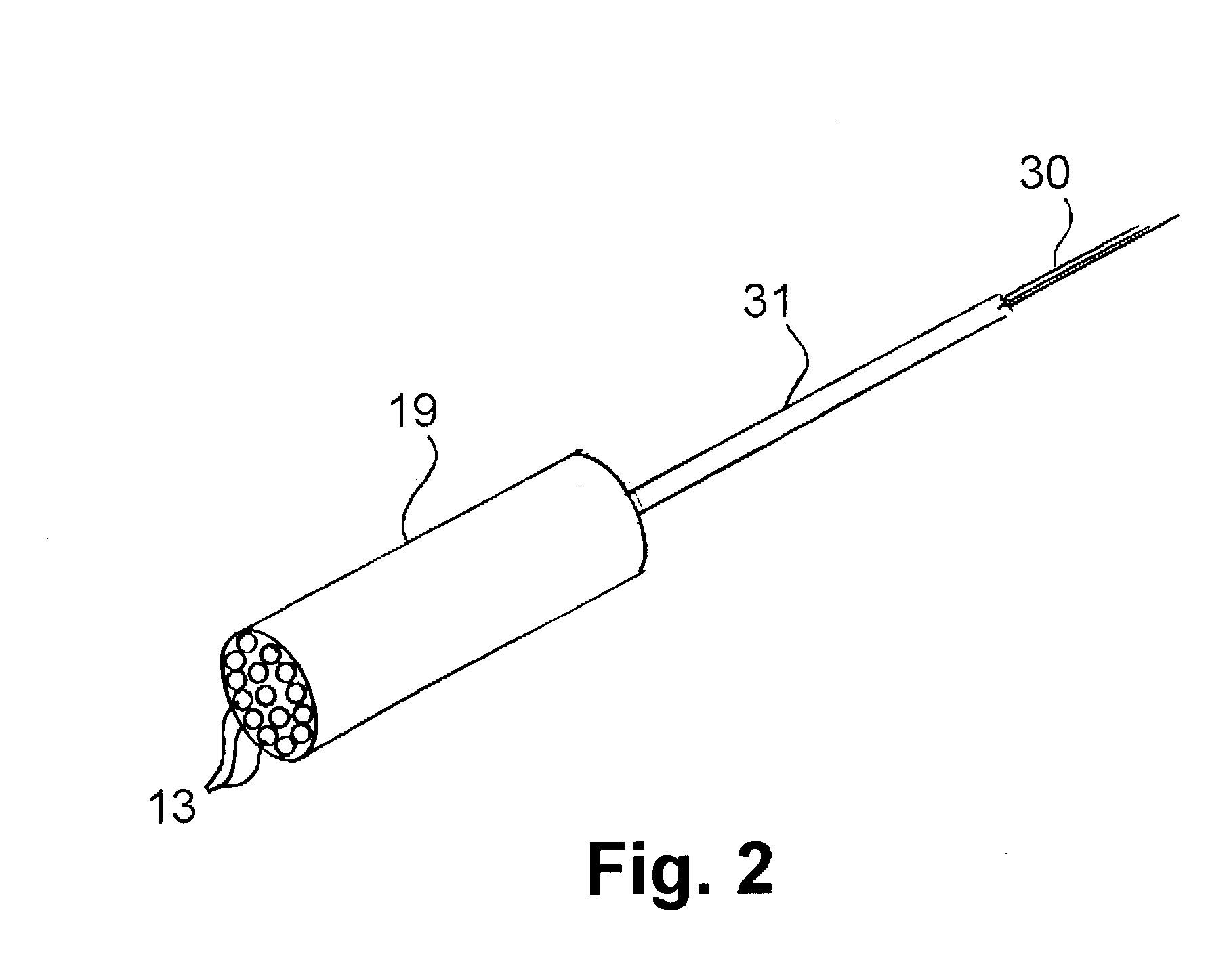Downhole lens assembly for use with high power lasers for earth boring
- Summary
- Abstract
- Description
- Claims
- Application Information
AI Technical Summary
Benefits of technology
Problems solved by technology
Method used
Image
Examples
Embodiment Construction
[0026] Disclosed herein is an earth boring apparatus or "drill", as shown in FIG. 1, that is at least partially locatable within a borehole 16. The apparatus comprises a plurality of optical fibers 11, each of which has a proximal fiber light energy input end, which is typically disposed above the surface of the earth and a distal fiber light energy output end, which is locatable in the borehole 16. A determining factor in the number of optical fibers 11 employed is the desired borehole size. Preferably, at least about 100 optical fibers are employed, although fewer fibers may be sufficient. Disposed at the distal fiber light energy output end of the optical fibers 11 is at least one focal lens 13. As with the number of optical fibers employed, the number of lenses 13 employed is also dependent on the desired borehole size. Focal lens 13 comprises a plurality of focal elements 12, each of which corresponds to the distal fiber light energy output end of at least one of the optical fi...
PUM
| Property | Measurement | Unit |
|---|---|---|
| Angle | aaaaa | aaaaa |
| Flexibility | aaaaa | aaaaa |
| Transmission | aaaaa | aaaaa |
Abstract
Description
Claims
Application Information
 Login to View More
Login to View More - R&D
- Intellectual Property
- Life Sciences
- Materials
- Tech Scout
- Unparalleled Data Quality
- Higher Quality Content
- 60% Fewer Hallucinations
Browse by: Latest US Patents, China's latest patents, Technical Efficacy Thesaurus, Application Domain, Technology Topic, Popular Technical Reports.
© 2025 PatSnap. All rights reserved.Legal|Privacy policy|Modern Slavery Act Transparency Statement|Sitemap|About US| Contact US: help@patsnap.com



